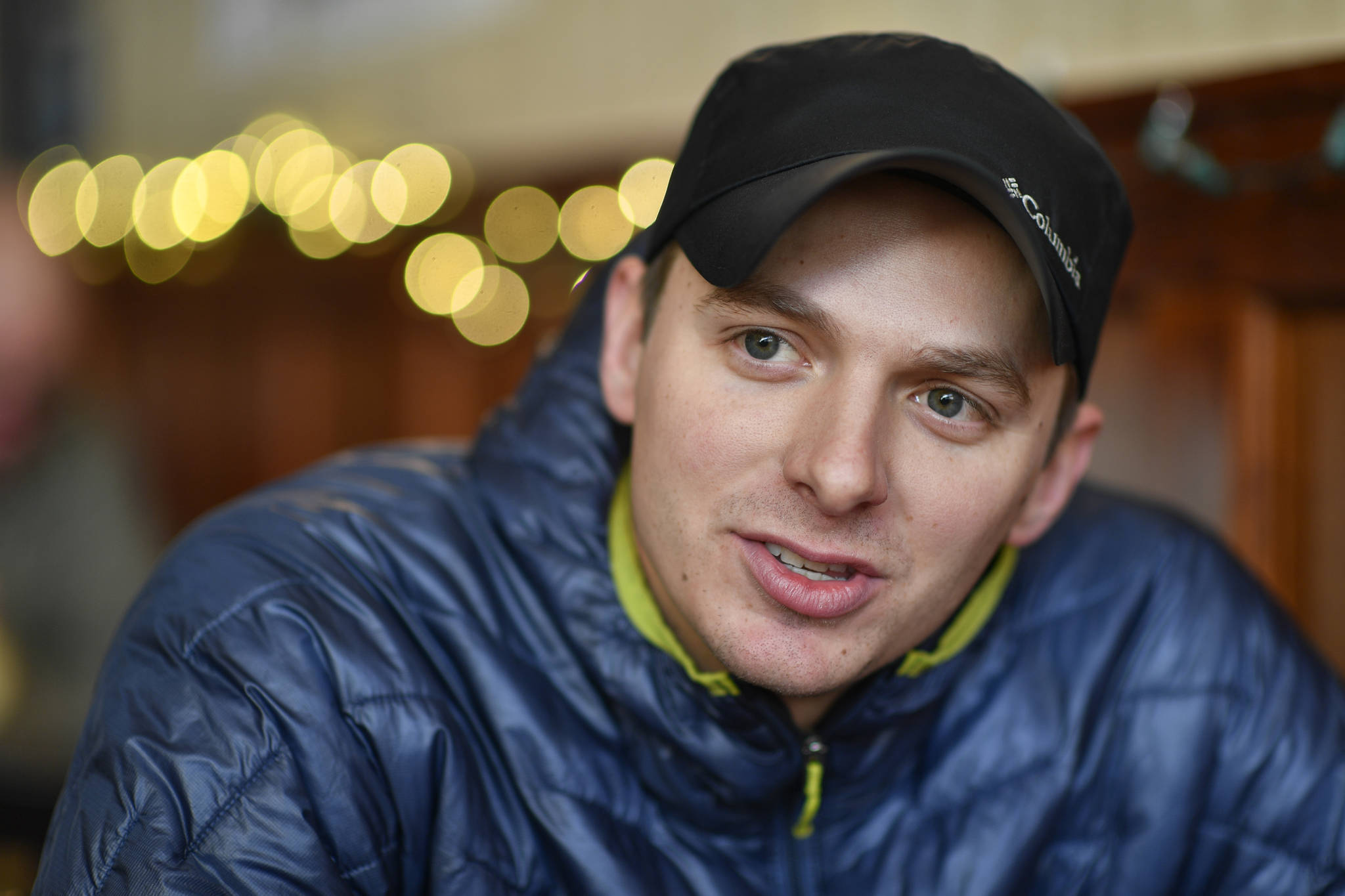Southeast Alaska and its salmon are a through line in wildlife filmmaker Ben Hamilton’s career.
Hamilton, who was in Juneau Friday to talk about his film “The Salmon Forest,” became a globetrotting wildlife filmmaker in large part because of work he did in Southeast beginning in 2008.
“I was in film school at the University of Texas,” Hamilton said during his presentation. “The only way I could pay to come up to Alaska and go camping was to make a film about it. All four years of college, I spent my summers in Alaska. After college, I then moved up to Sitka and started freelance shooting wildlife across Southeast Alaska. I ended up, from a tip from a buddy of mine, finding Southeast Alaska coastal wolves somewhere, and I ended up getting some footage of them and selling it to National Geographic.”
[Ocean acidification could first be felt in Southeast Alaska]
Hamilton, who is from San Antonio and now resides in Denver, then moved to Washington, D.C. and began working for National Geographic full time, starting his own company and travelling the world to film nature.
However, in the ensuing decade, projects repeatedly took him back to Southeast Alaska.
“Of all the places I’ve travelled in the world, the Tongass has the most special place in my heart,” Hamilton said. “It is by far my favorite place on Earth. Basically through a series of projects every single year I kept getting calls to keep coming back.”
One of those calls came from the U.S. Forest Service in 2015 and resulted in the making of “The Salmon Forest,” which came out in 2017.
Hamilton said the idea for the project was to make a film based on work done by former fisheries program manager for the Tongass Ron Medel that found salmon to be the most valuable part of the largest National Forest.
“The Tongass National Forest produces 25 percent of Pacific West Coast harvested salmon — the public land specifically,” Hamilton said.
The result of that effort is “The Salmon Forest,” a 30-minute documentary that draws a clear connection between the Tongass and salmon and underscores how important the fish are economically, ecologically and to people’s way of life.
Hamilton said at times talking to Southeast Alaskans about why salmon are important when making the film felt like asking someone why air is important.
“It almost shouldn’t need to be made,” Hamilton said during an interview with the Capital City Weekly. “The biggest revelation was how obvious and ridiculous it seemed that I was asking people how important salmon are.”
But he said people unfamiliar with Southeast Alaska aren’t always aware of how much salmon comes from the region and how the fish have a mutually beneficial relationship with the Tongass, and that’s one of the reasons his movie is shown at a Ketchikan visitor center.
The latter portion of the film includes discussion about how old growth forests are good environments for salmon, and how the bodies of salmon taken from the water by bears and birds help nourish the forest.
“Salmon Forest” was shot throughout the Tongass and stops were made at Prince of Wales, Ketchikan, Juneau and other locations. Hamilton said he saw many off-topic but amazing things that did not make the film.
[Public can help with state museum’s octopus project]
“We saw some incredible bear behavior,” Hamilton said.
He watched a mother bear defend her cubs from another sow, saw an orca pod hunt down a sea lion and took in more sunsets and sunrises than could be used in “Salmon Forest.”
Hamilton also captured some impressive moments that he hoped would surprise even those well aware of salmon.
“We went out before salmon run,” Hamilton said. “I put my camera underwater, and there must have been thousands of fry. From the surface you’d never see that.”
He said shooting underwater came with a pair of distinctive challenges — rain tends to cloud up streams, which makes underwater filming tough, and salmon don’t particularly like to have cameras near their redd or spawning nest.
Patience was the answer to both problems, Hamilton said.
Ultimately, Hamilton said he hopes the movie is a persuasive case for why conservation is important.
He said he’s recently had that point emphasized by the anemic salmon returns he’s seen while making a different salmon-related project.
“They used to have what you have,” Hamilton said. “It’s not an impossibility that you could dwindle that resource here.”
• Contact arts and culture reporter Ben Hohenstatt at (907)523-2243 or bhohenstatt@juneauempire.com. Follow him on Twitter @BenHohenstatt.

